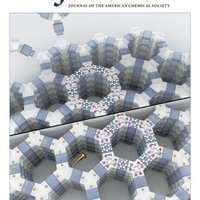Catalyst Behavior in Metal-Catalyzed Carbonyl-Olefin Metathesis
Item
Title
Catalyst Behavior in Metal-Catalyzed Carbonyl-Olefin Metathesis
List of Authors
C. S. Hanson; M. C. Psaltakis; J. J. Cortes; J. J. Devery
Abstract
Iron(III)-catalyzed carbonyl-olefin ring-closing metathesis employs reactivity not typically observed in Lewis acid-catalyzed reactions. In converting a ketone with a pendant olefin into a cycloalkene and a simple carbonyl byproduct, the reaction requires the Lewis acid catalyst to differentiate between the carbonyl of the substrate and that of the byproduct. It is necessary to determine how this solution interaction imparts the desired reactivity to best employ this method. Herein, we report detailed kinetic, spectroscopic, and colligative measurements applied toward the identification of the solution structures of the active Fe(III) and Ga(III) carbonyl-olefin metathesis catalysts. These data are consistent with formation of Lewis acid-carbonyl pairs for both metal systems under stoichiometric conditions. However, they diverge in the presence of higher equivalents of carbonyl, with Fe(III) forming highly ligated complexes, and no observed change for Ga(III). These findings are consistent with the resting state identity of the Fe(III) metathesis catalyst changing over the course of the reaction.
Date
2019
Publication Title
Journal of the American Chemical Society
Publisher
ACS Publications
Identifier
DOI 10.1021/jacs.9b02613
Bibliographic Citation
Carly S. Hanson, Mary C. Psaltakis, Janiel J. Cortes, and James J. Devery, III. Journal of the American Chemical Society, 2019, 141(30), 11870-11880.
